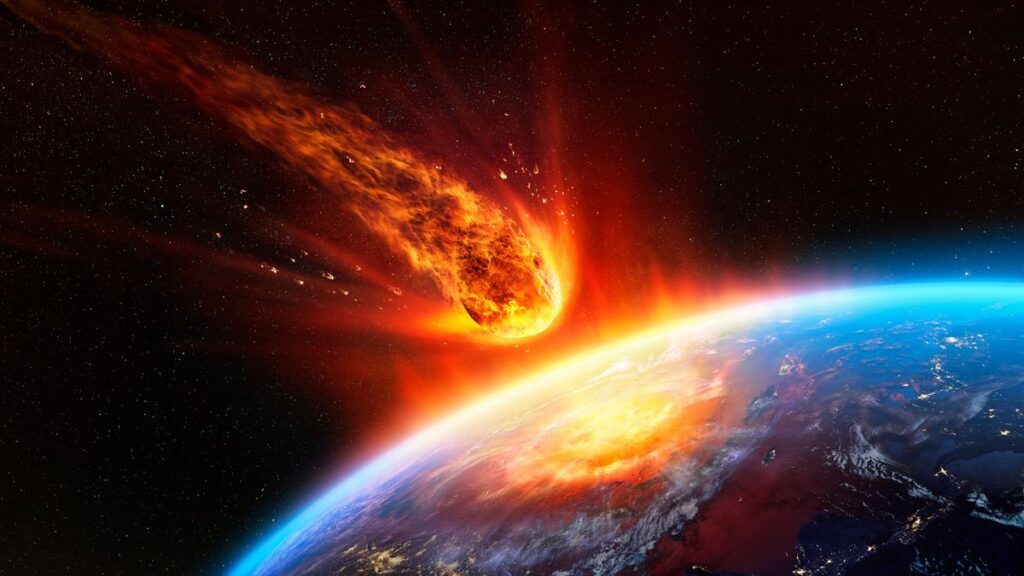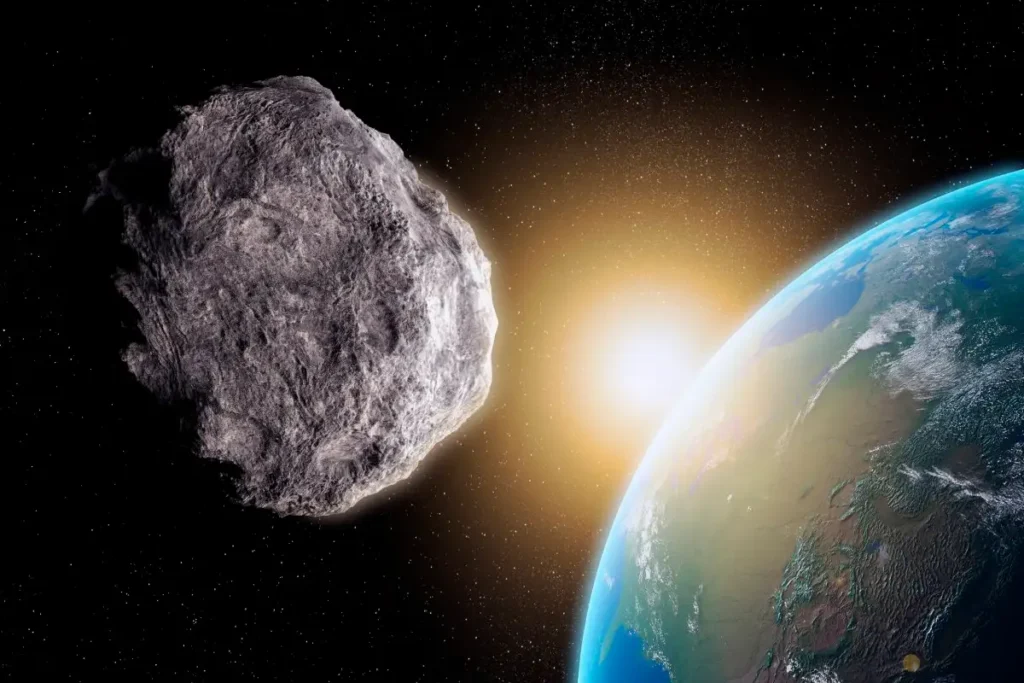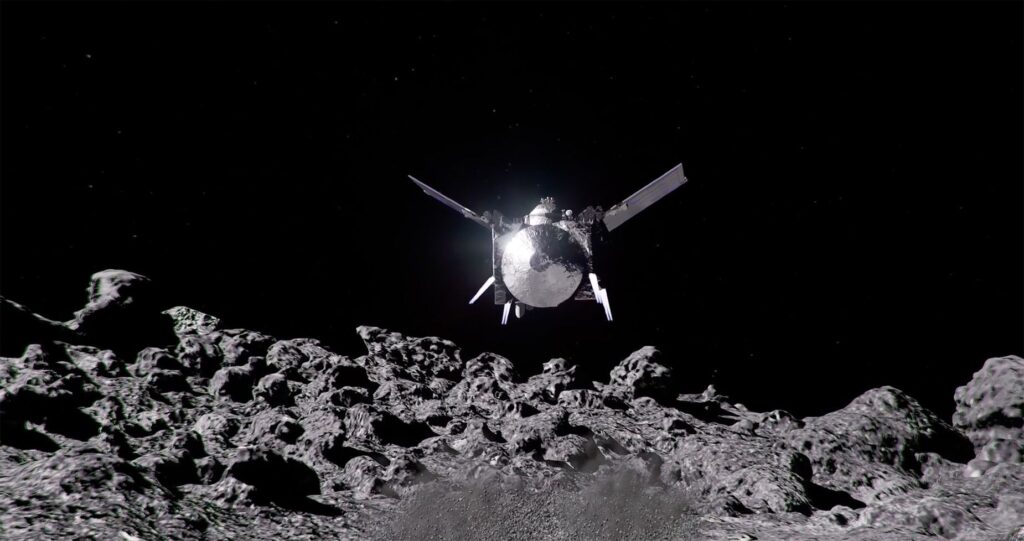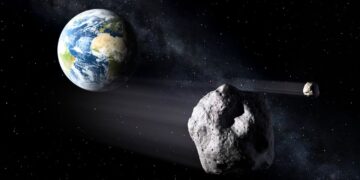Asteroid Apophis is one of the most famous near-Earth asteroids because it was once thought to be on a potential collision course with our planet. But thanks to the latest observations and calculations, scientists have confidently ruled out any such impact for the next 100 years.
So, what is Asteroid Apophis, how was it discovered, and why is it still important to study it? In this article, we will answer these questions and more, as we explore the fascinating story of this cosmic visitor. We will also learn how NASA plans to send a spacecraft to encounter Apophis before it makes its close approach to Earth in 2029.
If you’re curious about asteroids and their effects on Earth, you won’t want to miss this article. So, keep reading and discover the secrets of Asteroid Apophis.
Update: No Impact Risk for Earth

The first thing you need to know about Asteroid Apophis is that it poses no threat to Earth. This may sound obvious, but it wasn’t always the case. When Apophis was first discovered in 2004, it caused quite a stir among astronomers and the public, because it had a small but non-zero chance of hitting Earth in 2029 or 2036.
However, as more data was collected and analyzed, the probability of impact was gradually reduced to zero. The most recent observations, made in March 2021, confirmed that Apophis will safely pass by Earth at a distance of about 31,000 kilometers (19,000 miles) on April 13, 2029. That’s closer than some satellites, but far enough to avoid any harm.
The evidence that ruled out any impact risk for Earth came from a combination of sources, including optical telescopes, radar observations, and spacecraft data. One of the key players in this effort was NASA’s OSIRIS-APEX spacecraft, formerly named OSIRIS-REx, which visited another near-Earth asteroid, Bennu, and collected a sample from its surface. OSIRIS-APEX used its onboard instruments to measure the subtle effects of sunlight on the orbit of Bennu, a phenomenon known as the Yarkovsky effect. This helped scientists improve their models of how asteroids move and respond to external forces.
By applying the same techniques to Apophis, scientists were able to refine their estimate of its orbit and eliminate any uncertainty about its future trajectory. This means that we can rest assured that Apophis will not hit Earth in 2029 or beyond. But that doesn’t mean that we should ignore it. On the contrary, Apophis offers a unique opportunity to study and understand the evolution of asteroids and planetary tides.
Opportunity: A Remarkable Encounter in 2029

While Apophis will not impact Earth, it will come very close to it. In fact, it will be the closest Earth flyby of an asteroid of this size that scientists managed to forewarn. This makes it a remarkable event that will not only be visible to the naked eye, but also provide valuable scientific information.
Apophis is estimated to be about 1,100 feet (340 meters) wide and could cause serious damage were it to impact our planet. Fortunately, we don’t have to worry about that, but we can still learn a lot from its flyby. For example, we can study its shape, size, composition, rotation, and surface features. We can also measure how its orbit and spin change due to the gravitational pull of Earth, a process known as tidal distortion.
These measurements will help us understand how asteroids evolve over time and how they interact with other bodies in the solar system. They will also improve our ability to predict the orbits of other near-Earth asteroids and assess their potential impact risk. To achieve these goals, scientists are planning to use various instruments and methods, such as optical and infrared telescopes, radar systems, and laser ranging devices.
But perhaps the most exciting part of the Apophis flyby is that NASA intends to send a spacecraft to encounter it before it reaches Earth. This mission, called OSIRIS-APEX, will use the same spacecraft that visited Bennu and will perform a complete investigation of Apophis. This will be the first time that a spacecraft will rendezvous with an asteroid that will later fly by Earth.
Mission: OSIRIS-APEX to the Rescue

OSIRIS-APEX is a NASA mission that aims to explore Asteroid Apophis and collect valuable data that will enhance our knowledge of asteroids and their effects on Earth. The mission will use the same spacecraft that successfully visited Asteroid Bennu and returned a sample to Earth in 2023. The spacecraft, originally named OSIRIS-REx, was renamed OSIRIS-APEX after its primary mission was completed.
OSIRIS-APEX stands for Origins, Spectral Interpretation, Resource Identification, Security – Asteroid Preparedness and Exploration. The mission will use the same suite of instruments that OSIRIS-REx used to study Bennu, such as cameras, spectrometers, a laser altimeter, and a radio science experiment. The mission will also use the same navigation and propulsion systems that enabled OSIRIS-REx to orbit and touch Bennu.
The mission is scheduled to launch in 2026 and reach Apophis in 2028, a year before its close approach to Earth. The spacecraft will spend about six months in the vicinity of Apophis, conducting a comprehensive survey of its physical and chemical properties. The spacecraft will also measure the Yarkovsky effect on Apophis, as well as the tidal distortion caused by Earth’s gravity. The mission will also attempt to detect any satellites or debris around Apophis, and assess its potential for future exploration and resource utilization.
The mission will end with a flyby of Apophis on April 13, 2029, coinciding with its closest approach to Earth. The spacecraft will transmit the data it collected to Earth and provide a unique perspective of the event. The mission will also serve as a testbed for future asteroid missions and planetary defense strategies.
Conclusion
Asteroid Apophis is a fascinating object that will make history in 2029, when it will pass by Earth at an unprecedented distance. The event will not only be a spectacular sight, but also a scientific bonanza. Scientists will use various instruments and methods to study Apophis and learn more about its origin, evolution, and impact risk.
NASA will also send a spacecraft, OSIRIS-APEX, to encounter Apophis before it reaches Earth. The mission will use the same spacecraft that visited Asteroid Bennu and will perform a complete investigation of Apophis. The mission will provide valuable data that will improve our understanding of asteroids and their effects on Earth.
Asteroid Apophis is a space rock that won’t hit Earth, but it will teach us a lot about the solar system and our place in it. It will also demonstrate how we can explore and protect our planet from potential threats. Asteroid Apophis is a challenge and an opportunity that we should not miss.
Thank you for reading this article. I hope you enjoyed it and learned something new. If you have any questions or comments, please feel free to share them below. And don’t forget to mark your calendars for April 13, 2029, when Asteroid Apophis will make its historic flyby of Earth. It will be a sight to behold.



















